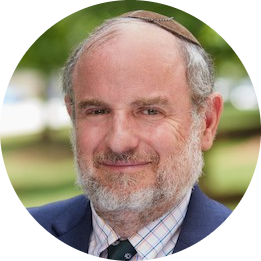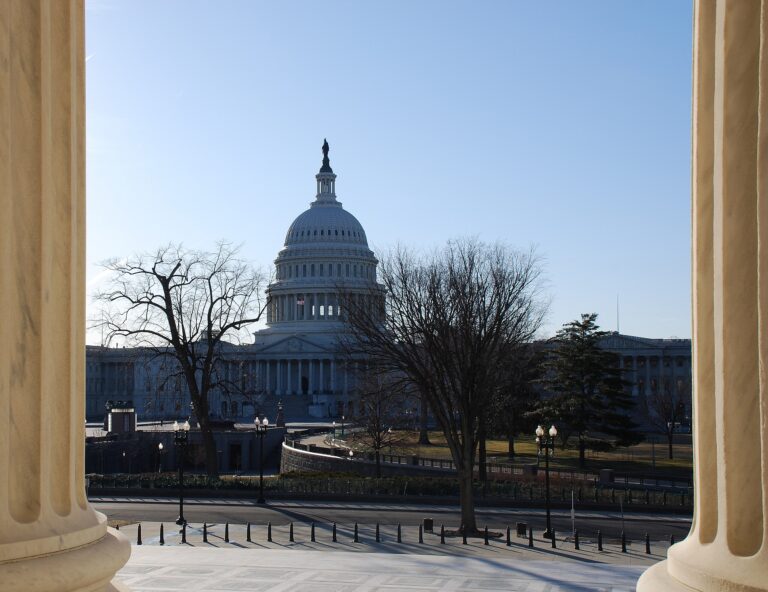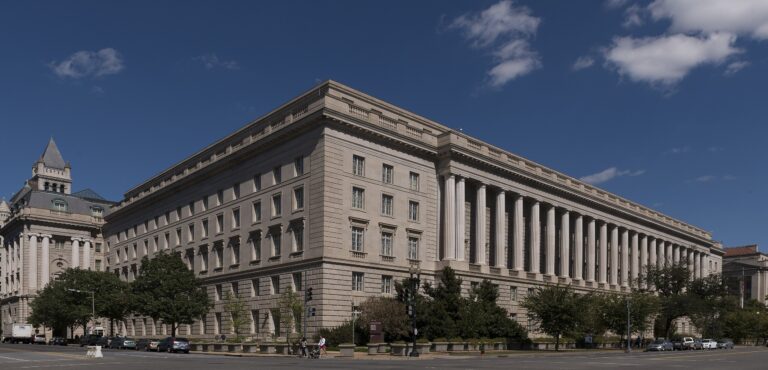
Balancing Faith and Inclusion in the Federal Workplace
Michael J. Broyde
Courtroom Bench Gavel by Patrick Feller (CC BY 2.0).
A new memorandum from the U.S. Office of Personnel Management (OPM), issued July 28, 2025, has put the spotlight on religious expression in federal workplaces. OPM Director Scott Kupor’s guidance explicitly affirms that federal employees “may seek to ‘persuade others of the correctness of their own religious views’” on the job. Even supervisors, the memo says, can discuss faith with subordinates – essentially recruiting them to the supervisor’s religion – so long as the effort isn’t “harassing in nature.” Agencies, for their part, are warned not to penalize anyone for declining to engage in these conversations. The stated goal is to “vigorously enforce” employees’ rights to freely exercise religion at work, echoing President Trump’s push to eradicate perceived anti-religious bias in government. “The Federal workforce should be a welcoming place for Federal employees who practice a religious faith,” the memo declares. But as the federal government opens the door to open religious advocacy in the office, it raises urgent questions about where the legal and cultural lines are drawn.
Legal Guardrails: Harassment vs. Free Expression
The Supreme Court has continued to refine the boundaries of permissible religious expression at work. For instance, in Groff v. DeJoy (2023), the Court clarified that an employer cannot deny a religious accommodation unless it would impose “substantial increased costs” on the operation of the business. This ruling strengthens religious protections in the workplace and reinforces the idea that accommodations cannot be rejected lightly.
Federal law has long walked a careful line on religion in the workplace. Title VII of the Civil Rights Act of 1964 prohibits religious discrimination in federal employment and requires reasonable accommodation of employees’ religious practices. It also protects workers from religious harassment – unwelcome conduct based on religion that is “sufficiently severe or pervasive” that it creates a hostile work environment. The Equal Employment Opportunity Commission (EEOC), which enforces these laws, has made clear that proselytizing at work can cross the line into unlawful harassment if it is unwelcome and extreme. In fact, EEOC guidance explicitly notes that religious preaching in the workplace may amount to illegal harassment if the conduct is unwanted and “so severe or pervasive that it creates a hostile or abusive work environment.” By the same token, “a consensual conversation about religious views, even if quite spirited, does not constitute harassment if it is not unwelcome,” the EEOC explains. In short, the law protects earnest expressions of faith – but it also protects employees’ right not to be subjected to religious pressure. The new OPM memo leans heavily on the former protection; it’s equally important to remember the latter.
Casual Conversations vs. Coercive Proselytizing
Where, then, is the line between a permissible chat about religion and unlawful proselytizing? The key distinction is whether the discussion is truly voluntary. Casual private conversations about faith – two coworkers amicably discussing their beliefs over lunch, for example – pose no legal problem when both parties welcome the exchange. These organic dialogues, conducted respectfully, are exactly the kind of “consensual conversation” the EEOC says is fine. Such interactions can even foster understanding in a diverse workforce. By contrast, coercive or repetitive proselytizing is where trouble brews. Uninvited attempts to convert a colleague, especially after they’ve indicated disinterest, cross a clear line. The law frames it simply: “Employees who seek to proselytize in the workplace should cease doing so with respect to any individual who indicates that the communications are unwelcome.”
Persistently preaching to someone who’s asked you to stop isn’t just impolite – it can become religious harassment under Title VII. For example, if an employee keeps telling a coworker to “rethink” their beliefs and won’t back off after the coworker objects, that behavior may create a hostile environment. The difference comes down to consent and tone. Sharing one’s faith in a friendly, one-off way is protected; pressuring colleagues with repeated or unwanted evangelizing is not. The OPM guidance itself nods to this limit, conditioning religious outreach on “efforts [that] are not harassing in nature.” The challenge will be ensuring that well-meaning discussions don’t drift into unwelcome persistence.
An Inclusive, Neutral Federal Workforce
Historical precedent also reminds us to tread carefully. In Corporation of the Presiding Bishop v. Amos (1987), the Court upheld Title VII’s exemption for religious organizations to employ individuals based on religion, but it simultaneously emphasized the importance of neutrality in government roles. Applying this reasoning, federal workplaces must avoid any perception that religious outreach is officially sanctioned or mandated.
The overriding principle must be that the federal workplace remains welcoming to employees of all faiths – including those of no faith – and that no one feels like an outsider. The OPM memo’s preamble rightly emphasizes inclusivity for people who “practice a religious faith.” Certainly, federal employees who are observant Muslims, Christians, Jews, Hindus, or others should feel free to wear religious attire, display personal religious items on their desk, or pray during break times without fear of discrimination. Supporting employees in bringing their whole selves to work, religion included, can strengthen diversity and morale. At the same time, inclusivity cuts both ways: the workplace must also be comfortable for those who don’t share the dominant faith in the room.
Being “welcoming” cannot mean one group’s religious expressions drown out others’ or put implicit pressure on anyone. A non-Christian or nonreligious employee should not fear that declining a prayer circle or a discussion about Jesus will brand them as a poor “team player.” Striking this balance is critical. The First Amendment, after all, not only protects free exercise of religion – it also bars any government endorsement of religion or non-religion. A federal office brimming with sanctioned proselytizing could risk giving the impression (fairly or not) that the government favors certain beliefs, especially if one faith tradition tends to predominate among those doing the proselytizing. In a pluralistic republic, public institutions must remain neutral arbiters that welcome a Bible on one desk, a Quran on another, and no religious display on a third, all with equal respect.
Work Hours Are for Work – and Managers Must Enforce It
However, courts have warned that not all speech by public employees enjoys First Amendment protection. In Garcetti v. Ceballos (2006), the Supreme Court held that when public employees speak pursuant to their official duties, their speech is not shielded by the First Amendment. This ruling has implications for supervisors who proselytize during official interactions—it suggests that such religious speech, if seen as part of managerial duty, may fall outside constitutional protection and trigger administrative concern.
Another vital check on this new policy will be the basic requirement that work comes first. Even OPM acknowledges that religious activities should not displace job duties. The memo permits things like employee prayer groups, but specifies they should meet on personal time, not during duty hours. In practice, this means an employee-led Bible study or meditation circle at lunchtime is fine, but pausing a staff meeting for group prayer or spending an afternoon debating theology instead of attending to customers is not. Employers have every right – indeed, a legal obligation – to ensure that workplace religious expressions don’t interfere with productivity or anyone’s ability to do their job.
The EEOC’s guidelines underscore this common-sense boundary. For example, if an employee’s on-the-clock proselytizing “interfered with work, the employer would not have to allow it.” Likewise, if coworkers complain that the constant religious discussions are disruptive, management can and should require those conversations to cease (at least with the unwilling employees) in order to maintain a harmonious working environment. In short, supervisors must walk a fine line: they should accommodate reasonable religious expression, but also step in swiftly if that expression starts eclipsing work or devolves into pressure on others.
This is especially important given the power dynamics involved. While the OPM memo asserts that supervisors have the same right as anyone to talk about religion with those they manage, a boss’s overtures carry an implicit power element. Even a polite invitation from one’s supervisor to join a prayer or attend church could be felt as an expectation by a subordinate. Agency leaders must set clear expectations that proselytizing never factors into workplace evaluations, and that managers must be scrupulous in avoiding any semblance of religious favoritism or coercion. The federal government’s role is to protect employees’ rights – both the right to express one’s faith and the right to be free from religious coercion – while keeping everyone focused on the agency’s public service mission during the workday.
Personal Faith, Private Moment: A Clerk’s Story
On a personal note, I recall a lesson in balancing faith and professionalism from early in my legal career. As a young law clerk hustling through fourteen-hour days in the chambers of the late and great Judge Leonard I. Garth of the Third Circuit, I sometime worked well into the night, leaving me with no choice but to find a quiet corner (there were not many!) for afternoon prayers (mincha, in Hebrew). One day, my co-clerk was absent and the sun was setting: I was silently praying in a corner when the judge stormed in, bothered by something in a memo I gave him. I was the only one in chambers, standing and praying feet together facing a wall. The judge must have seen me and walked away silently, leaving a sweet note on my desk to see him when I was “finished.” My experience reinforced that employees should never have to check their faith at the door of a federal building, so long as their practice remains personal. In truth, I was terrified, but Judge Garth was ever kind. In the end, it is a question of being simply respectful.
Personal practice always needs to be respected in the workplace when privately done. That is exactly the sort of religious expression that the Supreme Court has increasingly vindicated for public employees: personal, voluntary, and not disruptive. (Recall the coach in Kennedy v. Bremerton School District (2022) who prayed quietly on the football field after games – the Court upheld his right to do so, emphasizing that “respect for religious expressions is indispensable to life in a free and diverse Republic.”) My experience as a clerk reinforced that employees should never have to check their faith at the door of a federal building, so long as their practice remains personal and respectful. But it also showed the value of humility in how one shares faith. My prayer was my own. In a professional setting, I learned, living your faith is most powerful as an example – not as a pressure campaign.
Neutrality and Inclusion in the Age of Proselytization
The scope of permissible religious activity by employees was further clarified in Our Lady of Guadalupe School v. Morrissey-Berru (2020), which emphasized the autonomy of religious institutions under the ministerial exception. While this doctrine applies primarily to private religious schools, it reflects broader legal themes: the need to protect religious liberty while avoiding entanglement in theological disputes. Its lesson for federal offices is one of humility and restraint in managing diverse faiths.
Culturally and politically, OPM’s new guidance arrives at a fraught moment. It amplifies a narrative popular in some circles that religious employees – particularly Christians – have been marginalized in secular bureaucratic culture, and that government should swing the pendulum back toward open faith in the workplace. Advocates applaud the memo as affirming that public servants don’t forfeit their First Amendment rights when they punch the clock. Indeed, policies like allowing flexible schedules for prayer or permitting religious attire send a message that all faiths are valued in our government offices. However, critics see a more cynical motive. They worry that this initiative could “prioritize the promotion of Christianity in the workplace at the expense of the rights of all federal workers, regardless of their faith traditions.”
If the reality of “religious expression” at work translates into predominantly one faith group proselytizing (given that over two-thirds of Americans identify as Christian), employees from minority faiths – or those who are nonreligious – may feel newly alienated. The perception (even if unintended) of a government office pushing a particular religious viewpoint can erode the spirit of neutrality that underpins public trust. There’s also a risk that heated religious debates could fray collegial relationships and distract from agencies’ secular missions. None of these outcomes would be good for workplace cohesion or for the principle of equal opportunity. It’s telling that past administrations handled this topic with extreme care: for instance, Clinton-era guidelines on religious exercise in federal workplaces emphasized voluntary, non-disruptive expressions and warned against any hint of government endorsement of religion. The current policy’s broad encouragement of proselytizing is a departure that will need to be managed delicately to avoid undermining the very freedom it intends to champion.
Conclusion: Freedom to Pray, and Freedom not to Pray
Comparative insights from the private sector suggest this policy might ripple outward. According to a 2025 analysis by the law firm of Ogletree Deakins, the OPM guidance is likely to influence how private employers approach religious accommodations and diversity training. If implemented thoughtfully, it can serve as a model for inclusion; if abused, it risks marginalization of minority faiths.
Recent EEOC interpretations also reinforce this balance. In Barrett v. Vilsack (2024), the Commission noted that religious objections must reflect a genuine, sincerely held belief and not be speculative or hypothetical. Moreover, the EEOC affirmed that employers retain authority to require respectful conduct and prohibit disruption. Agencies implementing the OPM memo must ensure that both expressive rights and workplace order are preserved.
As the federal government navigates this expansion of religious expression on the job, success will hinge on a balanced approach. Federal employees should absolutely feel free to bring their faith to work — to pray quietly, wear symbols of their religion, form fellowship groups on their lunch hour, and engage in friendly discussions about beliefs. These freedoms enrich our public institutions and affirm the core American value of pluralism. At the same time, every employee also has the right to work in an environment free from religious pressure or discrimination. The OPM memo invokes our “historic and robust” tradition of religious liberty, and rightly so. But that tradition is a two-way street. Just as a person of faith must be free to share their beliefs, their colleagues must be equally free to decline the conversation — without fear of reprisal or ostracism.
Respect is the currency that will make this policy workable: respect by religious employees for the boundaries of others’ comfort, and respect by agencies for sincere religious needs. In practical terms, that means a Bible study group in the break room is fine, but cornering a coworker repeatedly to “save” them is not. It means a supervisor can mention their church picnic, but can’t hint that attending will curry favor. It means an atheist or minority-faith employee should feel just as valued and safe as an evangelical Christian.
The federal workforce belongs to everyone. By carefully following legal guardrails – as highlighted by the EEOC’s guidance and decades of case law – agencies can allow people to live out their faith at work and ensure no one is made to feel like a second-class citizen because of religion. The new OPM guidance opens the door for more open faith in federal offices; it’s now incumbent on leadership at every agency to keep that door open to all and to prevent it from slamming shut on inclusion. In the end, the measure of this policy’s success will be a workplace where an employee can say a quiet prayer or share a personal belief, and their colleagues of different persuasions still feel completely at home. That is a vision of both true religious freedom and true workplace equality – a balance as delicate as it is essential for a diverse democracy.
This essay is an expanded version of one published on August 4, 2025, by Bloomberg Law.

Michael J. Broyde is a law professor at Emory University School of Law, the Berman Projects Director of its Center for the Study of Law and Religion and an ordained rabbi who has been a synagogue rabbi and more in the Jewish community.
Recommended Citation
Broyde, Michael J. “Balancing Faith and Inclusion in the Federal Workplace.” Canopy Forum, August 27, 2025. https://canopyforum.org/2025/08/27/balancing-faith-and-inclusion-in-the-federal-workplace/.
Recent Posts










